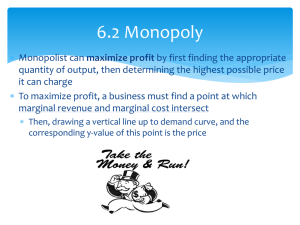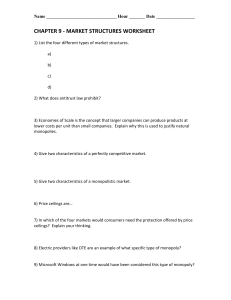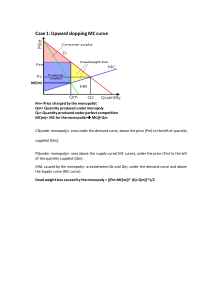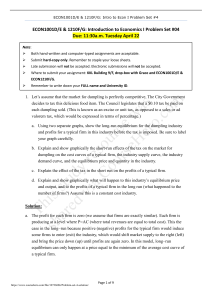Microeconomics II Test: Market Structures & Costs
advertisement
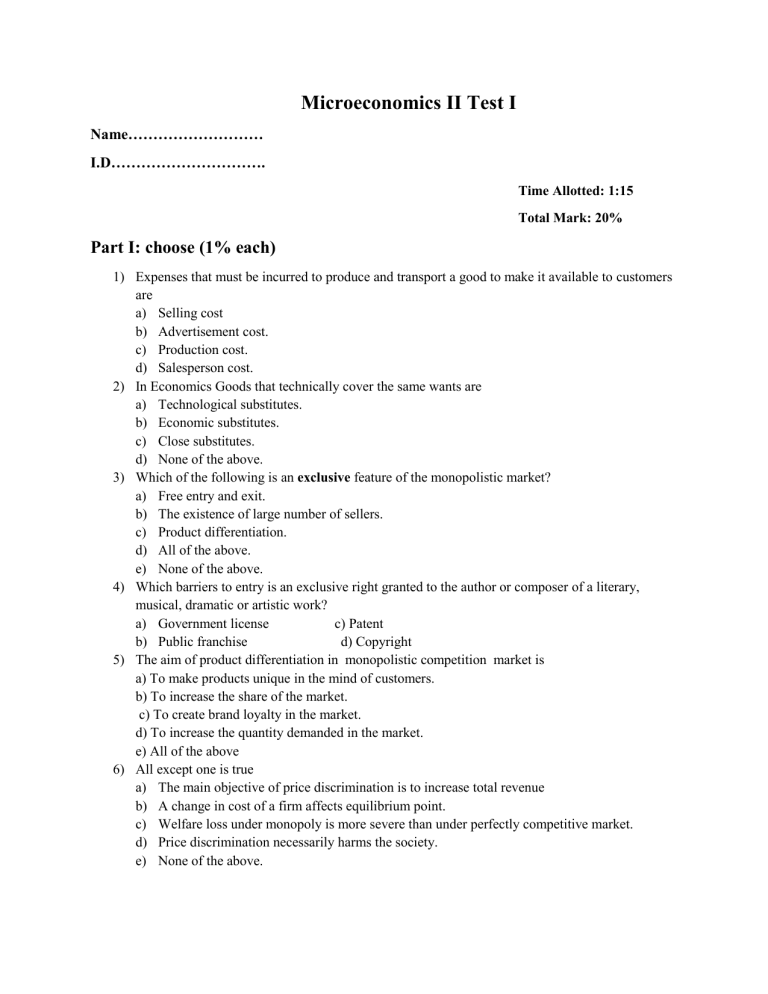
Microeconomics II Test I Name……………………… I.D…………………………. Time Allotted: 1:15 Total Mark: 20% Part I: choose (1% each) 1) Expenses that must be incurred to produce and transport a good to make it available to customers are a) Selling cost b) Advertisement cost. c) Production cost. d) Salesperson cost. 2) In Economics Goods that technically cover the same wants are a) Technological substitutes. b) Economic substitutes. c) Close substitutes. d) None of the above. 3) Which of the following is an exclusive feature of the monopolistic market? a) Free entry and exit. b) The existence of large number of sellers. c) Product differentiation. d) All of the above. e) None of the above. 4) Which barriers to entry is an exclusive right granted to the author or composer of a literary, musical, dramatic or artistic work? a) Government license c) Patent b) Public franchise d) Copyright 5) The aim of product differentiation in monopolistic competition market is a) To make products unique in the mind of customers. b) To increase the share of the market. c) To create brand loyalty in the market. d) To increase the quantity demanded in the market. e) All of the above 6) All except one is true a) The main objective of price discrimination is to increase total revenue b) A change in cost of a firm affects equilibrium point. c) Welfare loss under monopoly is more severe than under perfectly competitive market. d) Price discrimination necessarily harms the society. e) None of the above. 7) Which of the following statement is correct? a) The market demand and the firm’s demand are the same for a monopoly. b) Monopolies have perfectly inelastic demand for the product sold. c) Monopolies are guaranteed to earn an economic profit. d) All of the above. 8) Is the demand curve drawn on the assumption that if a firm changes its price others don’t change their price? a) Expected demand curve b) Proportionate demand curve c) Market demand d) None of the above 9) A monopolist firm a) Has a positively sloped supply curve. b) It has not the power to determine price. c) The term firm and industry are the same. d) All of the above. 10) Real differentiation occurs if a) The inherent characteristics of the product are different from that of other products. b) The location of the firm is different. c) The factor input of the firm is different. d) The advertisement makes it different in the mind of customers. Part II: short discussions (5%) 1. Discuss and explain the term Excess capacity? 2. List and explain the basic characteristics of monopoly firm? Part III work out (5%) 1) A monopoly firm producing identical products at two separate location have the following cost conditions C1 = 50+10q1 + 5q12 C2 = 24+ 30q2 And the revenue condition of the monopolist is P = 40 – 0.5q (q = q1+q2) calculate a) How much output should be produced at plant one? b) How much output should be produced at plant two? c) What price would maximize the profit of the firm? d) What is the profit of the firm?
